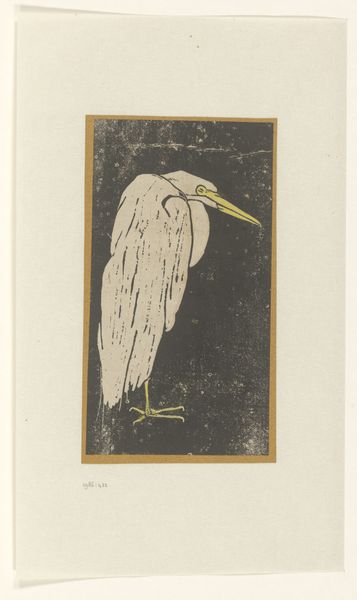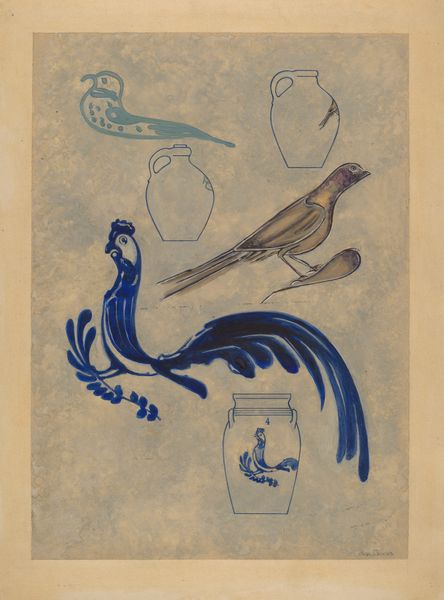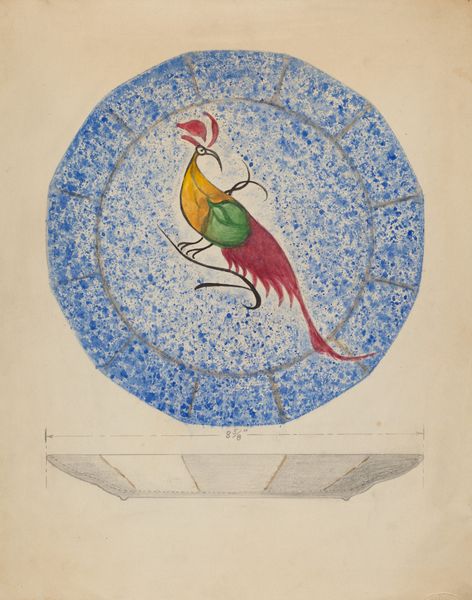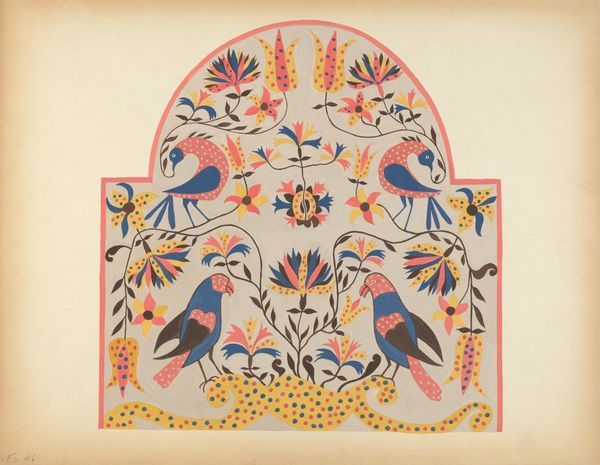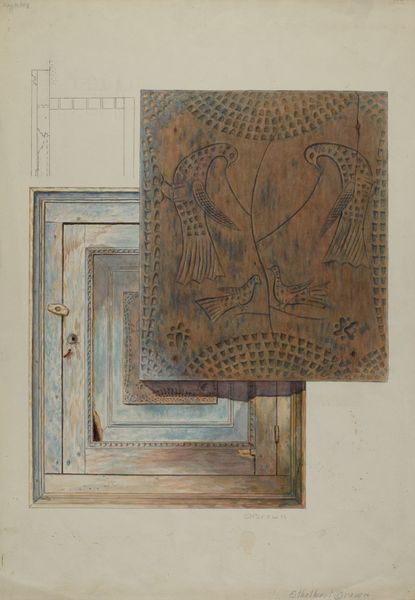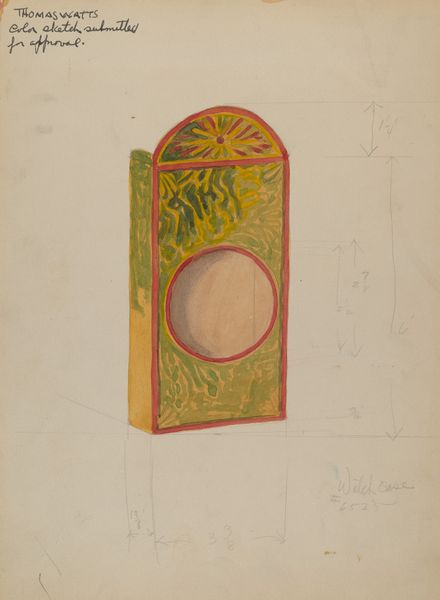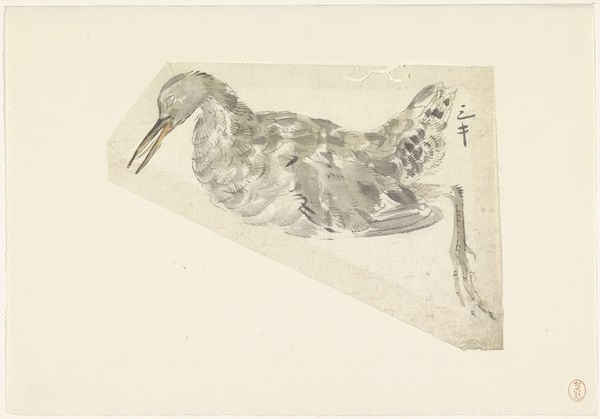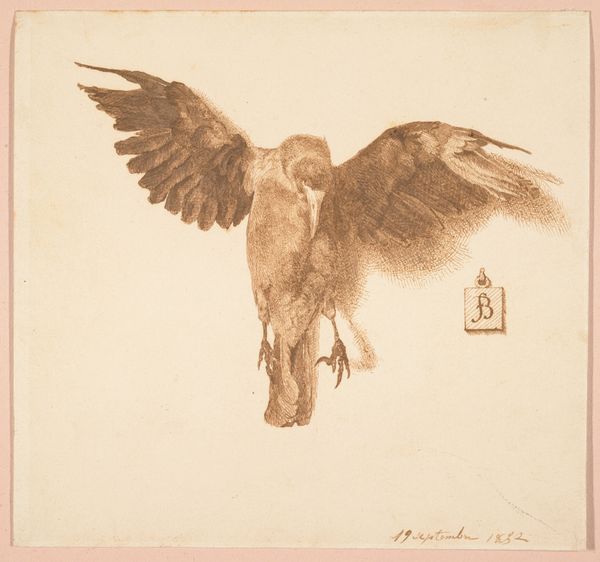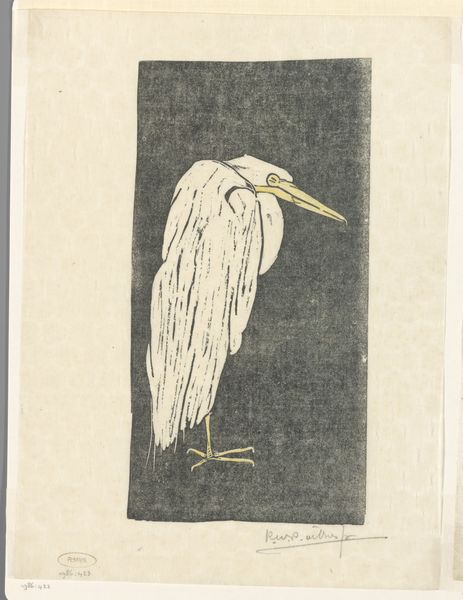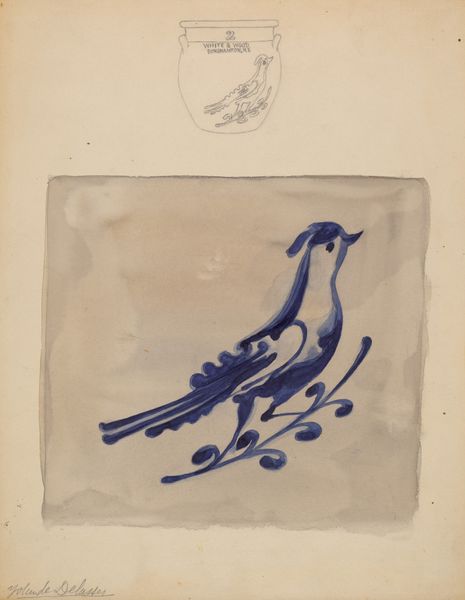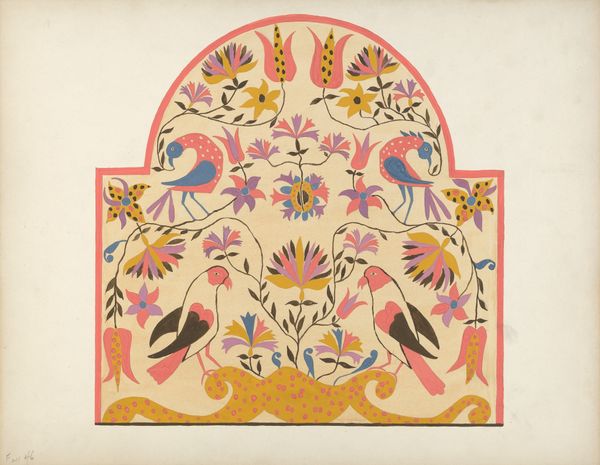
Fragment of Inscription, Pyramid Temple of Amenemhat I 1981 BC
0:00
0:00
painting, watercolor
#
portrait
#
water colours
#
painting
#
bird
#
ancient-egyptian-art
#
watercolor
#
egypt
#
ancient-mediterranean
#
men
#
watercolour illustration
Dimensions: h. 25.4 cm (10 in); w. 23.5 cm (9 1/4 in) scale unrecorded
Copyright: Public Domain
Curator: This is a watercolor of a fragment from the Pyramid Temple of Amenemhat I, dating back to around 1981 BC. Editor: The piece immediately strikes me as harmonious, but also incomplete. The limited color palette focuses the eye and creates a sense of balance, yet I am wondering about the effect of fragmentariness and decay of the image. Curator: Indeed. This piece offers us insight into ancient Egyptian royal ideology. Amenemhat I's reign was pivotal, establishing the 12th Dynasty and moving the capital to Itjtawy. Consider that monumental temple complexes weren't solely religious sites, but propagandistic tools for legitimizing the pharaoh's power. Editor: The emphasis on form seems quite clear: the careful modeling of the bird with these soft curves set against that geometric background pattern... it guides our sight in a really particular manner. What do we know about the color use? Curator: Color, especially in royal contexts, carried symbolic weight. Blue and gold signified divinity and immortality, reinforcing the king's connection to the gods and the promise of afterlife. A waterfowl, possibly a duck, here might allude to concepts of creation, renewal, and protection by the goddess Isis. Editor: Are we viewing it through strictly representational lenses? We might analyze it with structuralist frameworks, noting its formal structure beyond iconic symbolism. Curator: Agreed. Understanding its formal elements is only part of the picture, yet the social aspect can't be discounted, it serves as a visual record of power dynamics of its time. Also to think that Egyptian art often depicted pharaohs as larger-than-life, which reinforces this concept in viewers' perception. Editor: Its structure suggests, though incompletely, not only a narrative but also some set of coded ideas to those trained to appreciate such. Considering what a tiny fragment this is makes those associations even more striking. Curator: Looking at this image gives food for thought how art served both aesthetic and sociopolitical purposes. It calls us to critically explore intersectional dynamics through the image, even when taken away from its place of production and function. Editor: Analyzing fragments like these brings to bear just how much material is forever unavailable to us; a lesson about our approach as observers, as well as the values held within the picture itself.
Comments
No comments
Be the first to comment and join the conversation on the ultimate creative platform.

